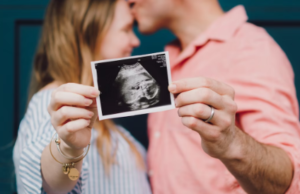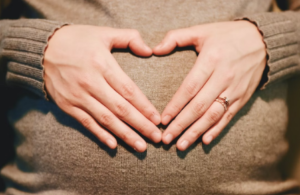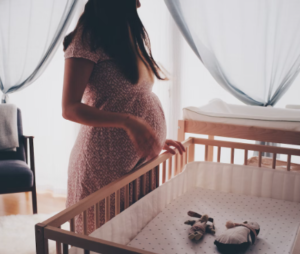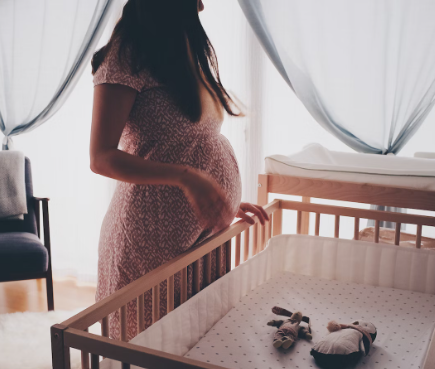Do you want to know the fetal development stage by stage? Stick to the end, as this post will shed some light on this topic.
The moment a woman conceives, she undergoes prenatal development. This includes the development of the embryo and the fetus during a viviparous animal’s gestation. The development begins with fertilization during the embryo’s germinal stage and continues in fetal development until a woman gives birth.
This process might seem easy as you read it, but the truth is many things happen from when the egg is fertilized to when the baby is ready to be born. As a result, we have conducted adequate research from trusted scientific sources to take you through fetal development. We will discuss the following:
- When and how conception occurs.
- What happens immediately after conception.
- The timeline for your baby’s development.
- The Stages of fetus’ growth (month-by-month)
When Does Conception Occur?
Conception occurs during a part of a woman’s menstrual cycle. This period is referred to as ovulation. Physicians consider the first day of a menstrual cycle as day 1 of a woman’s period. Ovulation normally occurs in the middle of a woman’s menstrual cycle. This falls around the 14th day in a normal menstrual cycle of 28 days. However, it is important to note that normal cycle lengths can vary too.
Ovulation occurs when one of the ovaries releases an egg. The egg then travels down to one of the fallopian tubes. In the case whereby the egg meets a sperm in the tube, the sperm could fertilize the egg. A woman’s egg has a lifespan of 12 to 24 hours before the sperm can fertilize it. Meanwhile, a sperm can live for several days in the woman’s body. This means that sperms already present from intercourse a few days ago could fertilize a freshly released egg.
Conception is dependent on many things;
- Timing of ovulation
- The quality of a man’s sperm and,
- A woman’s reproductive tract.
To conceive, most doctors recommend having unprotected sex about three to six days before ovulation or the day of ovulation. It increases the chances of the sperm being in the fallopian tube to fertilize the egg. After fertilization, your infant’s genetic makeup is complete, including its sex.
Your baby’s gender is determined by what sperm fertilizes the egg at conception. Women have a combination of XX while men have a combination of XY. Women provide each egg with an X, while the male’s sperm can either be an X or a Y. If the fertilized egg and sperm is a combination of two Xs, it is a girl. While a combination of XY forms a boy.
What Happens Immediately After Conception?
After fertilization, the egg rapidly divides into many cells. This happens within 24 hours. It then remains in the fallopian tube for about 3 days.
Afterward, the fertilized egg (now known as a blastocyst) continues dividing as it goes to the uterus. It then attaches itself to the endometrium, a process known as implantation. At this point, some women may notice slight bleeding, known as spotting. This is normal and should not raise any false alarm. After implantation, the endometrium becomes thicker, and the cervix gets sealed by a mucus plug.
After 3 weeks, the blastocyst cells form a little ball known as an embryo. The baby’s first nerve cells have already formed at this point. You will notice that your developing baby has already undergone a few name changes. To summarize, your baby will be called an embryo from conception until the eighth week. From there, the name will change to a fetus until the baby is born.
Timeline for Your Baby’s Development (Fetal Development Stage By Stage)
Throughout a normal pregnancy, your baby changes a lot. This time is divided into three stages known as trimesters. Each trimester comprises of about three months. Your doctor will talk to you about your infant’s development in terms of weeks. For instance, if you are two months pregnant, you are about 8 weeks. As development occurs in each trimester, you will notice distinct changes. This will happen to both the baby and you.
Basically, we normally think of pregnancy as a nine-month process. However, this is not the case as a full-time pregnancy is about 40 weeks or 280 days. This depends on what months you are pregnant on since some are shorter while others are longer. It will also depend on what week you will deliver. Therefore, you can either be pregnant for nine months or ten months. This is absolutely normal and healthy.
When you are about to get into labor, the are several category names you might hear. The names divide up in the last few weeks of pregnancy. The names are also used to look out for complications that occur with newborns. Babies born before or during the early term period may have complications of breathing, hearing or learning. This is not the case with babies born a few weeks later in the full-time frame. Moreover, it is important to know how these labels are written. For instance, you may see the week first (25), followed by two numbers separated with a slash mark (6/7). It stands for how many days you currently are in the gestational week. So, 25 6/7 means that you are on the 6th day of your 25th week.
The last weeks of pregnancy are divided in the following groups:
- Early term: 37 0/7 weeks through 38 6/7 weeks.
- Full term: 39 0/7 weeks through 40 6/7 weeks.
- Late term: 41 0/7 weeks through 41 6/7 weeks.
- Post term: 42 0/7 weeks onwards.
Ensure you consult your doctor about your baby’s gestational age and due date.
Stages of Fetus Growth (Month-by- Month)
First Trimester
 The first trimester spans from conception to 12 weeks. Generally, it occurs between the first three months of pregnancy. During this trimester, you will notice many changes. Your baby will make a distinct change from a small grouping of cells to a fetus that has begun to have baby’s features.
The first trimester spans from conception to 12 weeks. Generally, it occurs between the first three months of pregnancy. During this trimester, you will notice many changes. Your baby will make a distinct change from a small grouping of cells to a fetus that has begun to have baby’s features.
Month 1 (1-4 weeks)
During the first month of pregnancy, the following happens with regards to fetal development:
- A water-tight sac forms around the fertilized egg, gradually filling it with fluid. This sac is known as the amniotic sac, and it assists in cushioning the growing embryo.
- The placenta also develops during this time. The placenta is an organ that is round and flat that develops alongside a growing embryo. This organ assists in the transfer of nutrients from the mother to the baby. It also transfers waste from the body. It is, therefore, a food source for your baby throughout pregnancy.
- The baby’s face will take the form of large dark circles for the eyes.
- The mouth, the lower jaw, and the throat also develop.
- Circulation also begins at this point as blood cells take shape.
- Development of a tiny heart tube that beats 65 times a minute by the end of the fourth week.
- The baby grows to about ¼ inch long by the end of this first month.
Month 2 (5-8weeks)
The following happens;
- the facial features continue to develop. Ears grow as tiny folds of skin at the side of the head.
- Tiny buds that later grow to arms and legs also develop. Fingers, toes, and eyes of the baby are also forming.
- The brain, spinal cord and other neural tissues of the central nervous system develop fully at this point.
- The digestive tract and sensory organs begin to develop at this point. Bone starts to replace the cartilage.
- The baby’s head is large in proportion compared to the rest of the body. At around 6 weeks, the heartbeat can be detected clearly.
- By the end of the 8th week, your baby is about 1 inch long and weights about 1/30 of an ounce.
At this point, the baby is mature enough to be called a fetus instead of an embryo.
Month 3 (9-12 weeks)
- The arms, hands, fingers, feet and toes of the baby are now fully formed.
- Your baby starts exploring a bit by doing things such as opening and closing of the mouth and also fists.
- Fingernails and toenails begin to develop. External ears are formed.
- Teeth beginnings form under the gums.
- The reproductive organs also develop although it is difficult to distinguish the gender at this point.
- The baby is fully formed by the end of the third month. Organs and limbs present continue to develop in order to become fully functional.
- The baby’s circulatory and urinary system are working at this point and the liver starts producing bile.
- Your baby is about 4 inches long and weighs about 1 ounce.
By the end of the third month, most critical development has taken place and chances of miscarriage drop considerably.
Second Trimester
 This trimester is often thought as the best part of pregnancy as it offers the best experience. Morning sickness is gone at this time and also the discomforts of early pregnancy.
This trimester is often thought as the best part of pregnancy as it offers the best experience. Morning sickness is gone at this time and also the discomforts of early pregnancy.
Month 4 (13-16 weeks)
Here is what happens in month 4:
- Baby’s heartbeat is now audible through an instrument called a doppler.
- Fingers and toes are well developed. Also, the eyelids, eyebrows, eyelashes, nails and hair are formed.
- Teeth and bones become denser. The baby can now suck his or her thumb, yawn, stretch and make faces.
- Nervous system begins to function. The reproductive organs are fully developed and can be recognized by an ultrasound.
- Your baby is now 6 inches long and weighs about 4 ounces.
Month 5 (17-20 weeks)
Here is what happens in month 5:
- Movements may be felt at this point. Your baby is exercising the muscles being developed.
- Some hair begins to grow on the baby’s head.
- The shoulders, back, and temples of the baby are covered by a soft fine hair called the lanugo. This hair is used to protect the baby and is usually shed at the end of the baby’s first week of life.
- Also, the baby’s skin is covered with a cheesy substance that is whitish in color called the vernix caseosa. It protects your baby’s skin from long exposure to the amniotic fluid. The coating is shed just before birth.
- Your baby is now 10 inches long and weighs about 1 pound.
Month 6 (21-24 weeks)
Here is what happens in month 6:
- Baby’s skin is now reddish in color, wrinkled, and veins are visible through the baby’s translucent skin. Finger and toe prints are also visible.
- The eyelids begin to separate, and the eyes open.
- The baby starts responding to pulse by moving or increasing pulse, and you may notice the jerking motions.
- Your baby is now 12 inches long and weighs about 2 pounds.
Month 7 (25-28 weeks)
Here is what happens in month 7:
- Your baby continues to mature and develops body fat reserves.
- The hearing is fully developed.
- The baby’s position changes frequently, and he/she responds to stimuli. Including sound, pain, and light.
- The amniotic fluid starts to diminish.
- If your baby is born prematurely, they will likely survive after the seventh month.
- Your baby now weighs 2 to 4 pounds and is about 14 inches long.
Third Trimester
 This is the final part of your pregnancy. Throughout this trimester, your baby will gain weight quickly by adding body fat that will help after birth.
This is the final part of your pregnancy. Throughout this trimester, your baby will gain weight quickly by adding body fat that will help after birth.
Month 8 (29-32 weeks)
Here is what happens in month 8:
- Your baby continues to mature and develops body fat reserves.
- You may notice more kicking.
- The brain is developing rapidly at this point, and our baby can see and hear.
- Many internal systems are well developed, although the lungs may still be immature.
- Your baby now weighs up to 5 pounds and is about 18 inches long.
Month 9 (33-36 weeks)
Here is what happens in month 9:
- Lungs are nearly fully developed as the baby continues to grow and mature.
- Baby’s reflexes are coordinated as he or she can blink or close the eyes, turn the head, grasp firmly, and respond to light, touch, and sound.
- Your baby weighs 5 ½ pounds and is about 17 to 19 inches long.
Month 10 (37-40 weeks)
Here is what happens in month 10:
- This is the month whereby you could go into labor at any time.
- You will notice that the baby’s movements reduce due to tight space.
- The baby’s position change to prepare for birth. The head is directed towards the cervix.
- Your baby is ready to meet the world, and you may feel very uncomfortable as the baby drops into your pelvis.
- Your baby now weighs 18 pounds and is about 18 to 20 inches.
See Also
- Red Dots vs Holographic Sights
- Types of Mattresses with Pros and Cons
- 7 Best Church Speakers.Portable/Wall Mounted
Conclusion
Your baby takes time to develop, bit by bit as discussed above. The journey is interesting and a unique experience. We were glad to take you through this and hope you have learned more about the fetal development process.
See Also

